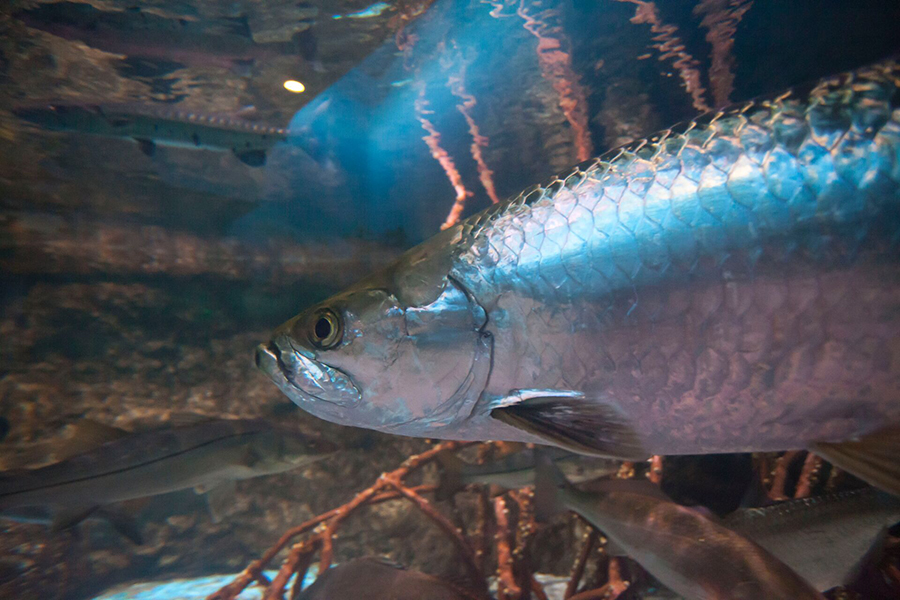Exploring the Mangrove Forests: Nature's Coastal Guardians
Welcome to the coastal mangrove forests of Florida, Alabama, Mississippi, Louisiana, and Texas, a vital ecosystem teeming with life. These unique habitats are home to mangrove trees, which have long, tangled root systems designed to thrive in ever-changing tides.
Mangrove trees are masters of survival in harsh coastal environments. Their intricate root systems stabilize the shoreline, reducing erosion caused by waves, tides, and storms. Red mangroves use specialized membranes to filter out salt from seawater, while black and white mangroves excrete salt through their leaves, forming crystals that eventually fall off, returning the salt to the water below.
These root systems also create safe nurseries for countless marine species. The roots shelter young fish from predators, while decaying leaves and accumulated bacteria provide an abundant food supply, supporting the entire ecosystem.
Life Beneath the Mangroves
As juvenile fish grow, they migrate from the mangrove forests to nearby flats. Many of these fish are prized by anglers. Look for the redfish, easily identified by the eyespot near its tail. Keep an eye out for the sleek, silver tarpon with its large scales and upturned jaw. Tarpon are sought-after gamefish known for their powerful fights and acrobatic leaps when hooked. You might also spot the elusive bonefish, known for their bony bodies, making them difficult to prepare for eating. Because of this, most bonefish are caught and released.

Mangrove Conservation Efforts: Protecting the Future
Several of WOW’s conservation partners work tirelessly to preserve these valuable ecosystems such as the Bonefish & Tarpon Trust, focusing on research, education, advocacy, and stewardship to protect game fish species and their habitats. The American Sportfishing Association and Center for Sportfishing Policy also represent anglers at the state and federal levels, working to conserve marine habitats and promote sustainable fishing practices.
The Gentle Giants: Manatees
Another iconic inhabitant of these mangrove waters is the manatee. These gentle, slow-moving aquatic mammals inhabit shallow estuaries and bays rich in seagrasses and aquatic vegetation. Though primarily herbivorous, manatees occasionally eat small fish and invertebrates. Sadly, all three remaining species of manatees are considered vulnerable due to habitat loss, boat collisions, and environmental changes.
Mangrove forests are more than coastal woodlands — they are vital ecosystems supporting marine life, protecting coastlines, and connecting us to a world of natural wonder. Through conservation efforts and education, we can help ensure these unique habitats thrive for generations to come.
